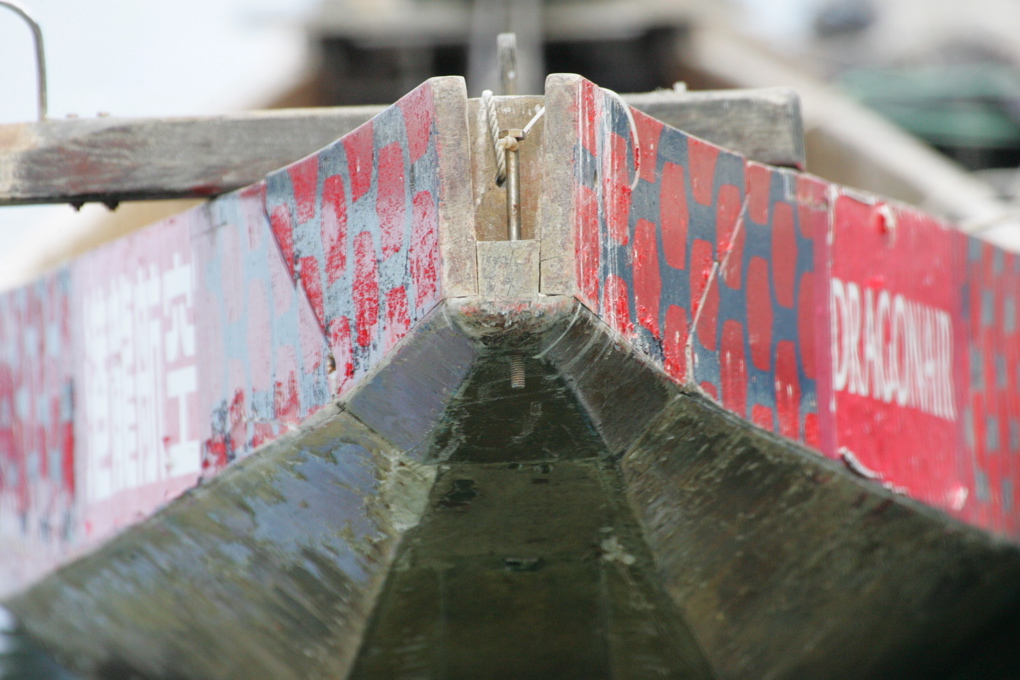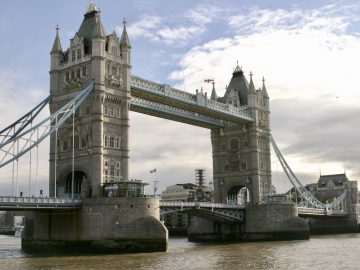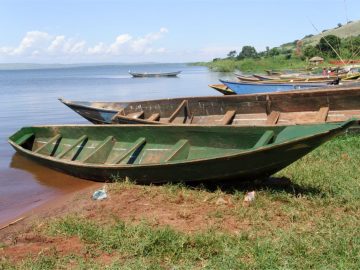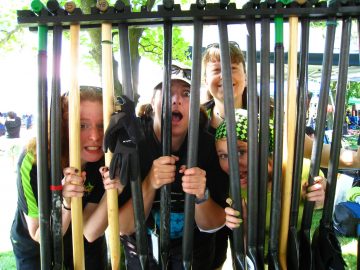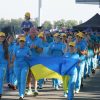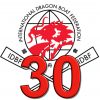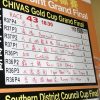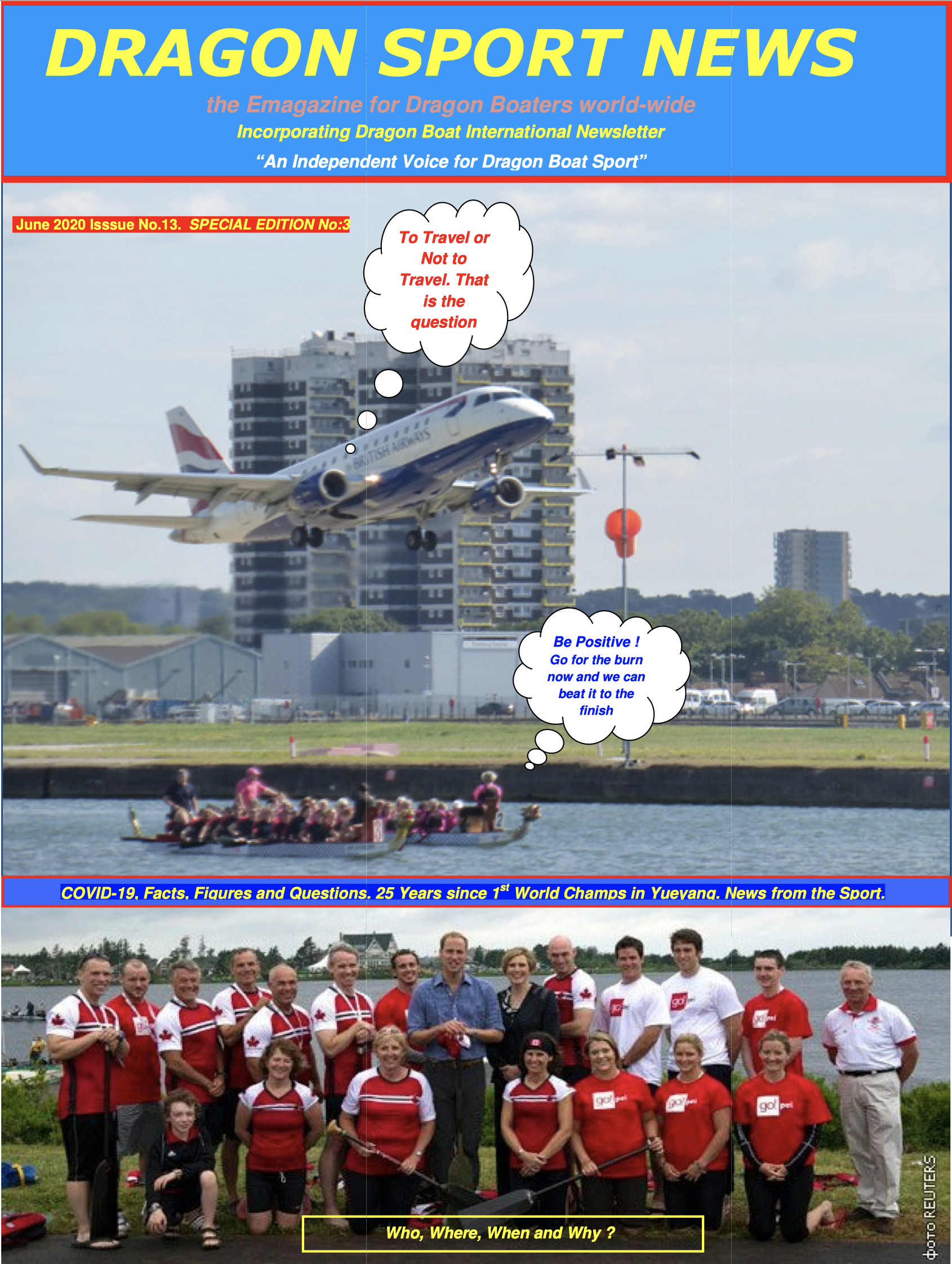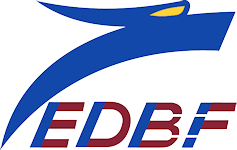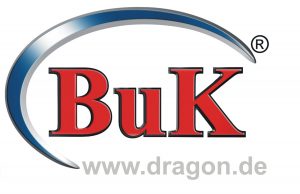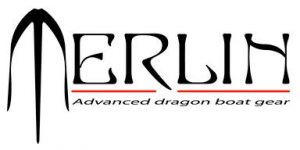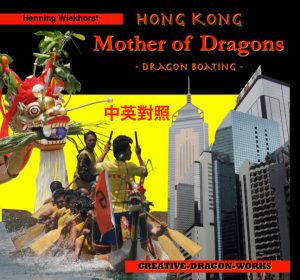“Biomechanics of Dragon Boat Racing” is a four-parts-series of scientific articles written by Sarah Ho to be published in the magazine “Dragon Boat World International” (DBWI), this Part 2 in edition No. 5 – January 2009.
After completing a bachelor degree in Exercise and Sport Science (University of Sydney) in 2005, she began an honours research project into the biomechanics of on-water dragon boat paddling. At the time completing a PhD at the University of Sydney, she investigated various aspects of dragon boat racing such as: the physiology of dragon boat racing, physique and physiological characteristics of elite paddlers and 3D biomechanics of simulated on-water paddling.
Part 2: Kinetics
Dragon Boat Propulsion
Kinetics is the study of forces developed to produce movement. In dragon boat racing, forces affecting the boat, paddle and paddler interact to produce boat movement.The ultimate aim of a dragon boat race is to propel the boat across the race distance in minimal time. Movement of the boat is achieved by the generation of power by the twenty paddlers,which is transformed into forward propulsion of the boat through the paddle by its interaction with the water. The power developed at the blade is then transferred into boat propulsion through the paddler’s contact with the boat at the feet and seat. Thus, an understanding of the forces acting on the boat, blade and athlete and how these factors affect boat velocity can help to identify ways to maximise performance [1].
Drag and Propulsive Forces
Movement of the dragon boat is affected by drag forces, which are influenced by the movement of the hull through the water (hydrodynamic drag) and air (aerodynamic drag) [2] and act to resist the forward motion of the boat. Forward movement of the dragon boat essentially results from the propulsive force developed at the blade by the paddler overcoming the aerodynamic and hydrodynamic drag forces acting on the dragon boat, paddler and paddle [1, 2] (Figure 1). Thus in order to achieve optimum performance of the dragon boat, drag forces on the dragon boat and paddler must be minimised and factors which contribute to improved propulsive forces must be maximised [1]. As there are restrictions regarding modification of the paddle and dragon boat (which could minimise hydrodynamic drag), the greatest potential for performance improvements is through maximising propulsive forces at the blade and the transmission of these forces to the boat.

Blade Dynamics
During paddling, the paddler applies a force against the water through the paddle blade. The interaction between the blade and the water is composed of drag and lift forces (Figure 1).The drag forces act in direct opposition to the movement of the blade and lift forces act at right angles to the movement of the blade [3].
The proportion of lift and drag forces contributing to propulsive force varies depending on the angle of the oar relative to the boat and the relative velocity between the blade and the water [1, 3].
Paddling propulsion in canoeing is a result of thrust, which is generated by drag forces at the blade[4]. As the motion of the dragon boat blade is most similar to the canoe blade, it would be expected that propulsive forces in dragon boat paddling are also developed predominantly as a result of the drag forces at the blade.Therefore, maximising drag forces at the blade in the propulsive direction during dragon boat paddling is vital in improving boat propulsion and can be achieved by maintaining a more vertical paddle position for a longer proportion of the stroke.
Paddle Force Analysis
The principles of boat propulsion in dragon boat paddling are similar to that of rowing which,as described by Millward (1987), involves the intermittent and cyclic application of propulsive force through the blade. As the propulsive force produced by the paddler is the primary factor that contributes to forward propulsion of the boat, performance is predominantly dependant on the amount of force applied to the blade and the angle through which the force is applied [1, 5, 6]. Analysis of the force profile (a graphical representation of paddle force with time or paddle angle) and other descriptive paddle force characteristics is fundamental in understanding factors that influence performance and identifying components which may be modified to improve performance [1, 6].
There is a significant relationship between performance level in rowers and certain biomechanical performance parameters that relate to the force-profile [6, 7]. By identifying specific parameters of the force-profile that distinguish between athletes of different ability levels and successful or unsuccessful techniques, these parameters can be used to evaluate performance, modify technique and predict rowing ability [8, 9]. It is likely that there may be similar links between level of performance in dragon boat paddlers and biomechanical parameters related to dragon boat paddling. Factors that contribute to successful performance in other sports may point to areas that should be examined in dragon boat paddling and factors which could potentially lead to improvements in dragon boat performance.
Force Profile
Force-time profiles and force-angle profiles of athletes allow the investigation of the relationship between force at the blade with time (and phases of the stroke) and angle of the blade. Rowers show individualised force profiles,which remain consistent over a range of stroke rates,indicating that there is a lack of conformity in the rowing style, even at the elite level [10, 11]. Similar body motions between rowers during the rowing action may produce different force-profiles.
The slope and shape of the force-time curve are significant factors for the analysis of rowing and paddling technique [2, 7, 12, 13]. A large area under the force-time curve reflects high forces applied over a sustained period of time [8]. A flatter, wider force-curve with a steep slope should be emphasised as it reflects a longer maintenance of force and faster rate of force development and requires a lower peak force to achieve the same boat speed as a tall, narrow force-time curve [2, 14] (Figure 2). Rowers who show slow rates of force development also lack force during the stroke [11].

The force-angle profile can be used to provide information related to the work capacity and skill of the rower and discriminate between rowers of different ability levels [8]. Smith and Spinks (1995) showed that characteristics such as average power output (power can be defined as the force produced at the blade multiplied by the velocity of the blade movement or the rate at which work is completed), consistency of power output, stroke-to-stroke consistency, (the accuracy with which force and angle values were repeated throughout each stroke) and stroke smoothness (smoothness of force application during drive phase) of rowers were able to discriminate rowers of different levels of ability. Furthermore, there was a positive relationship between performance level and each variable, with the variability of these variables within each group decreasing as performance level increased.
Paddling Efficiency
Paddling ‘efficiency’is a term used to describe paddling performance. In biomechanical terms, ‘paddling efficiency’ is a measure of the proportion of energy exerted by the dragon boat paddler through the blade during dragon boat paddling that is used in the forward propulsion of the dragon boat (propulsive energy), relative to the total amount of energy exerted by the paddler. While absolute force and power is dependent on gender and individual strength, paddling efficiency is a performance index for paddling technique. During rowing and paddling, a proportion of the power produced at the blade is lost to the water surrounding the blade [3, 15], thus it is theoretically impossible to achieve 100% efficiency. Low values of paddling efficiency result in wasted energy.As elite athletes are generally at the peak of their physical fitness, minimising losses in paddling efficiency due to factors such as paddling technique provides a potential strategy for improving performance [16].
Successful performance in rowing depends not only on maximising the force generated at the blade but also on the efficiency with which the blade force is used in propelling the boat [8, 17]. Performance in dragon boat paddling would be expected to follow this principle. Efficiency in rowing is determined by the athlete’s style [3] and can be used as an index of rowing skill.
In rowing and other paddling sports, boat velocity has commonly been used as a measure of performance as there are generally a minimal number of rowers and paddlers contributing to the boat velocity simultaneously. However, in a dragon boat crew there are twenty paddlers who contribute to the average velocity of the boat and thus boat velocity alone is not an accurate measure of individual performance in dragon boat racing. Paddling efficiency, which considers the individual contribution of each paddler’s power output to boat velocity, may be a more appropriate performance criterion for individual dragon boat performance.
A Research Study: Kinetics of Dragon Boat Paddling
In a study conducted at the University of Sydney (Sydney, Australia) in 2006, dragon boat paddlers were recruited from Sydney dragon boat clubs and categorised as ‚elite’ or ‚sub-elite’ based on number of years in state and national crews and performance in recent ergometer trials. An instrumented paddle was provided by Talon to measure paddle force, and video filming was conducted during the testing.The aims of the study were to “measure” the performance of the elite and sub-elite groups using paddling efficiency and subsequently to compare kinetic (force) and kinematic (movement) characteristics of paddling in order to determine what specific characteristics contributed to successful paddling performance. As there have been no published scientific studies on dragon boat biomechanics, the study also aimed to provide a description of biomechanical aspects of dragon boat paddling.
Force Profile
Paddle force was analysed during high-intensity paddling at a stroke rate between 80 and 90 strokes per min.Ten consecutive strokes from each paddler were selected for analysis. Each stroke was ‘normalised’ to percentage of stroke (i.e. graphed relative to one stroke) with one stroke described as paddle entry of one stroke to the beginning of paddle entry of the next stroke and consisting of a ‘drive’ and ‘recovery’ phase.The drive phase was defined as the period during which the paddle was in the water (initiated by paddle entry) and recovery phase was the period when the paddle was out of the water (initiated by paddle exit). An average force curve was calculated for each paddler based on the ten strokes.
Analysis of the individual force curves of each paddler showed that for the same stroke rate, the pattern of the force curves was consistent from stroke to stroke, suggesting that the force profile may be an individualized characteristic. Comparing the average force profiles of all paddlers (Figure 3),there were variations in the overall shape of the force profile from paddler to paddler, however all force curves showed a rapid increase in force soon after paddle entry with a peak in paddle force between 10 – 25% of the stroke.The time spent with the paddle in the drive phase varied slightly between paddlers but generally comprised 60% of the stroke.
Comparing the male and female elite paddlers with male and female sub-elite paddlers, the elite paddlers had higher values for strength-variables such as peak force, average force and rate of force development, even when these variables were described relative to body mass to minimize the effects of gender on strength.This suggests that (as would be expected), strength is a major contributing factor to performance level in dragon boat paddling.

Paddling Efficiency
Paddling efficiency, the average energy used in the propulsive direction relative to the total energy used during paddling, was applied as a measure of paddling performance and more specifically, paddling technique. As paddling efficiency is an indicator of technique, it is independent of strength and gender. Comparison of paddling efficiency between the elite and sub-elite group revealed that elite paddlers achieved higher paddling efficiency than the sub-elite paddlers, particularly during the second half of the drive phase suggesting that elite paddlers had superior technique to subelite paddlers. A possible explanation for the higher paddling efficiency could be that elite paddlers spent a greater proportion of the stroke in the drive phase, however this hypothesis needs to be investigated further in future studies. Differences in paddle angle between the elite and sub-elite group during the drive phase in order to maximize time spent with the paddle in a vertical position (so that a higher proportion of power produced at the blade was being used in the propulsive direction) may also be a method by which the elite paddlers achieved higher paddling efficiency (more in part 3).





